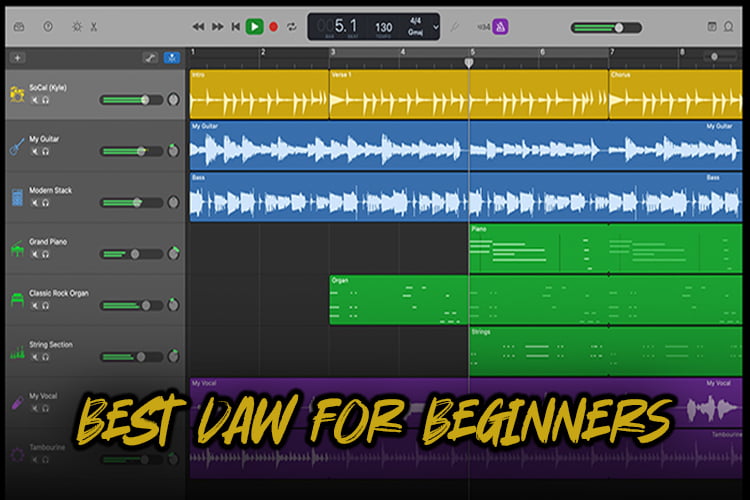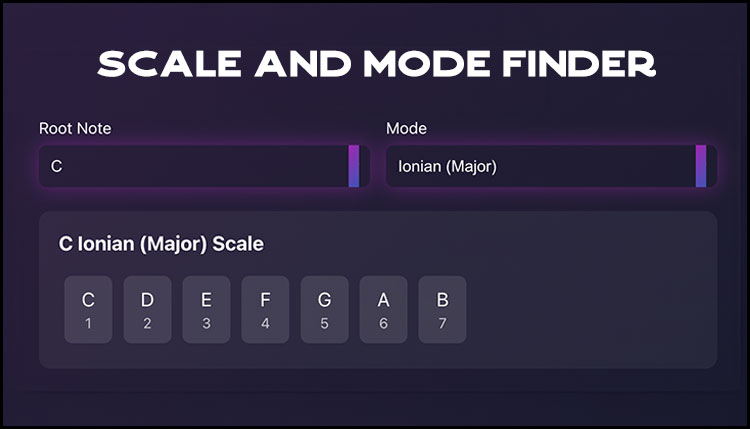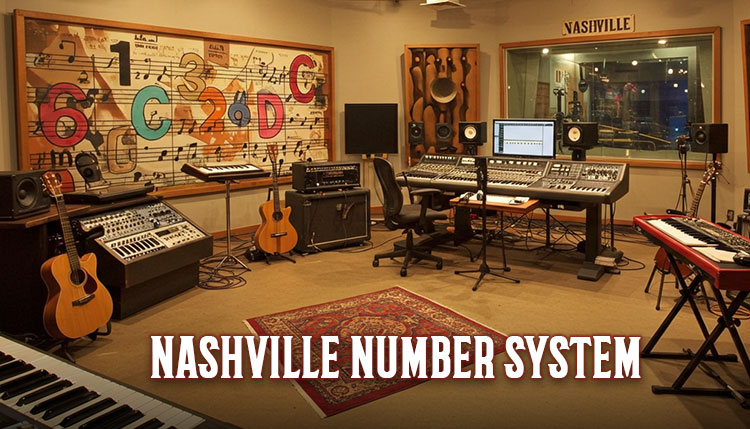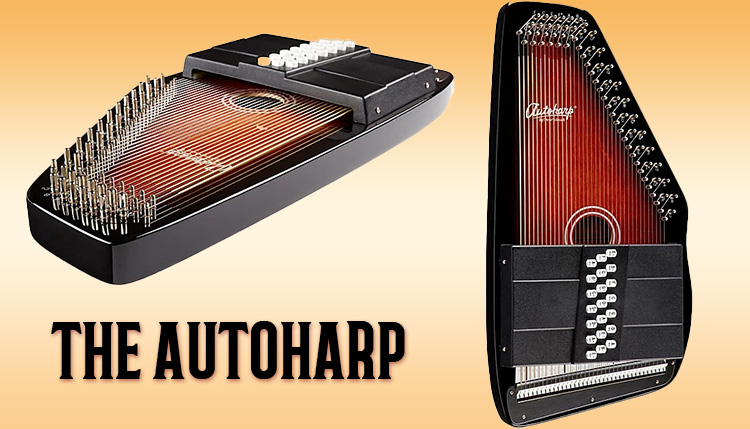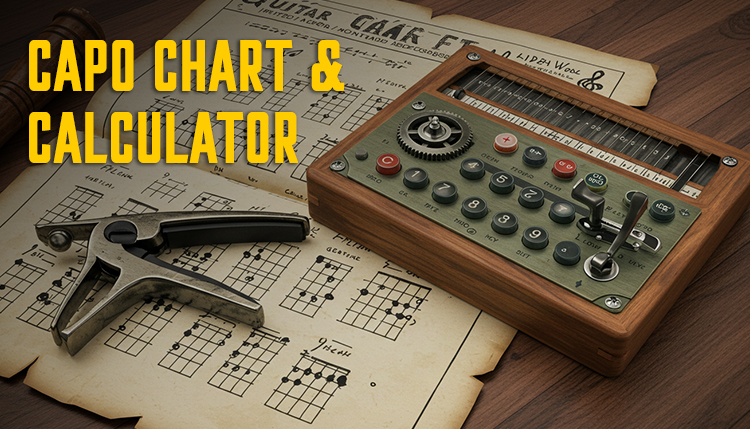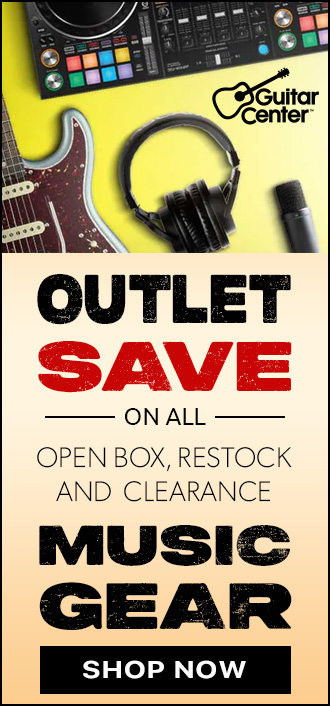Are you ready to dive into the exciting world of music production? If so you’re in for a treat!
The music recording industry is booming, and it all starts with choosing the right Digital Audio Workstation (DAW).
But with so many options out there, how do you find the best DAW for beginners? Don’t worry, we’ve got you covered!
In this guide, we’ll walk you through the top picks for 2024, helping you find the perfect tool to unleash your inner music producer.
Let’s get started!
What is a DAW and Why Do You Need One?
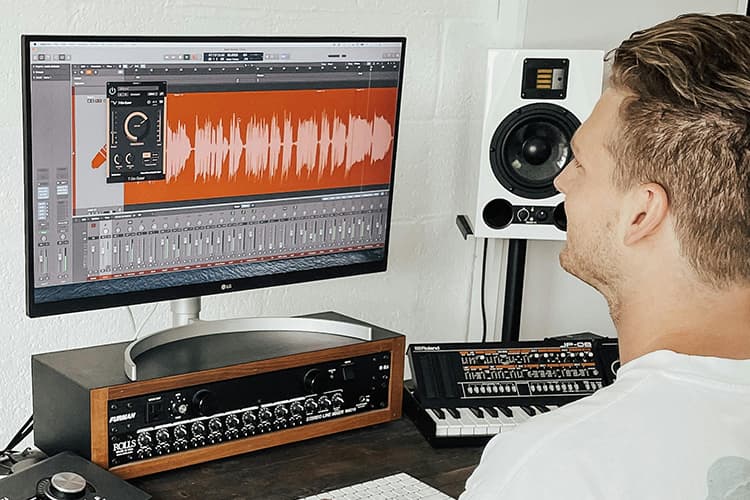
Let me tell ya, when I first heard the term “DAW,” I was totally lost. Like, what the heck is that? Some kinda fancy car?
Turns out, it stands for Digital Audio Workstation, and lemme tell you, it’s a game-changer for anyone looking to make music these days.
So, what exactly is a DAW? Well, it’s basically a software that lets you record, edit, and produce music right on your computer. It’s like having a whole recording studio at your fingertips!
I remember when I first started learning how to produce music, I was using a clunky old tape recorder and a bunch of pedals. Talk about a headache!
The cool thing about DAWs is that they can do so much.
You can record live instruments, use virtual instruments, add effects, mix your tracks – pretty much everything you need to create a professional-sounding song.
It’s crazy how much power these things pack!
Now, here’s the thing – choosing the right DAW when you’re just starting out is super important.
I made the mistake of jumping into a really complex one right off the bat, and let me tell you, I was lost for weeks.
It’s like trying to fly a spaceship when you’ve barely mastered a bicycle.
For beginners, you want something that’s user-friendly but still has enough features to grow with you as you learn.
Trust me, there’s nothing worse than outgrowing your DAW after just a few months and having to start all over with a new one.
According to a recent study, the global music production software market is expected to reach USD 851.05 billion by 2031, growing at a CAGR of 1.85% from 2024 to 2031!
Part of the growth is due to the fact that DAWs have totally revolutionized music production for newcomers like us.
Back in the day, you’d need a whole studio setup with the best music production equipment to make decent recordings.
Now? All you need is a computer and a DAW. It’s democratized music production in a way that’s pretty freakin’ awesome.
I remember the first time I laid down a full track using just my laptop and a DAW. It was mind-blowing!
Sure, it wasn’t Grammy-worthy or anything, but the fact that I could do it all by myself in my bedroom? That was something special.
Here are a few ways DAWs have changed the game for beginners:
- Affordability: You don’t need to break the bank to get started
- Accessibility: You can make music anytime, anywhere
- Flexibility: Experiment with different sounds and styles easily
- Learning curve: Many DAWs have built-in tutorials and resources
Of course, having all these options can be overwhelming at first.
I spent way too much time tweaking synth sounds when I should’ve been focusing on actually writing songs.
But that’s part of the learning process, right?
Bottom line, if you’re serious about making music, you’re gonna need a DAW. It’s just a question of which one is right for you.
And trust me, once you find the right fit, it’s gonna open up a whole new world of musical possibilities.
So buckle up, ’cause it’s gonna be a fun ride!
Best DAW for Beginners in 2024
Alright, let’s dive into the good stuff – the top DAWs for beginners in 2024.
Now, I’ve been around the block a few times with these bad boys, and let me tell ya, the options have come a long way since I first started out.
When I was picking out these top 5, I wasn’t just pulling names out of a hat.
Nah, I looked at a bunch of factors like ease of use, features, price, and how well they grow with you as you learn.
‘Cause let’s face it, nobody wants to be stuck with training wheels forever, right?
So, without further ado, here’s my rundown of the top 5 DAWs for beginners in 2024:
1. GarageBand (Mac only)
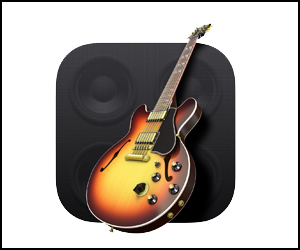
- Pros: Free, super intuitive, great for Apple users
- Cons: Limited features, Mac only
- Price: Free
- Trial: N/A (it’s already free!)
2. Ableton Live Lite

- Pros: Powerful, great for electronic music
- Cons: Can be overwhelming at first
- Price: Often bundled with an audio interface
- Trial: 90 days
3. FL Studio Fruity Edition
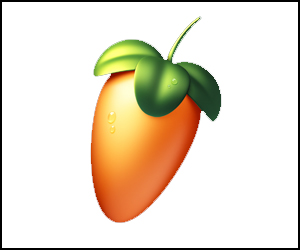
- Pros: Intuitive interface, great for beat-making
- Cons: Limited audio recording capabilities in this version
- Price: $99
- Trial: Unlimited (with some features locked)
4. Reaper
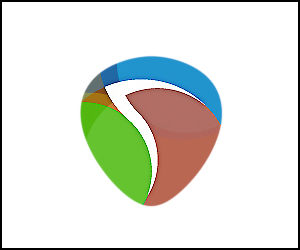
- Pros: Affordable, fully-featured
- Cons: Steeper learning curve
- Price: $60 for a discounted license
- Trial: 60 days (full features)
5. PreSonus Studio One Artist
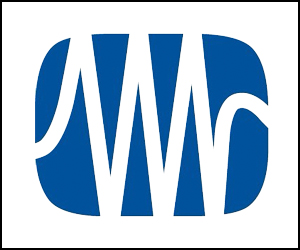
- Pros: Well-rounded, drag-and-drop interface
- Cons: Some advanced features locked behind higher tiers
- Price: $99.95
- Trial: 30 days
Now, let’s talk user interface and learning curve.
GarageBand is probably the easiest to jump into – it’s like the Fisher-Price of DAWs, but in a good way!
On the flip side, something like Reaper might take a bit more time to get your head around, but it’s got a ton of depth once you do.
I remember when I first opened up Ableton Live. Man, I felt like I was staring at the control panel of a spaceship!
But after a few tutorials and some messing around, it started to click.
Now I can’t imagine using anything else for my electronic tracks.
FL Studio was a game-changer for me when it came to making beats. The step sequencer is so intuitive, it’s like it reads your mind!
Just don’t get too caught up making loops – I once spent a whole weekend on a 4-bar loop and forgot to, you know, finish the song.
PreSonus Studio One is like the Swiss Army knife of DAWs.
It’s got a little bit of everything, which is great if you’re not sure what kind of music you want to focus on yet.
I’ve used it for everything from recording my garage band to making EDM tracks.
One thing to keep in mind – don’t get too hung up on which DAW is “best.”
They all have their strengths, and at the end of the day, it’s about finding the one that clicks with you.
I’ve seen killer tracks made on GarageBand and awful ones made on thousand-dollar setups.
It’s not the tool, it’s how you use it!
So there you have it, my top 5 DAWs for beginners in 2024. Take ’em for a spin, see what feels right.
And remember, the best DAW is the one that gets you making music!
Features to Look for in a Beginner-Friendly DAW
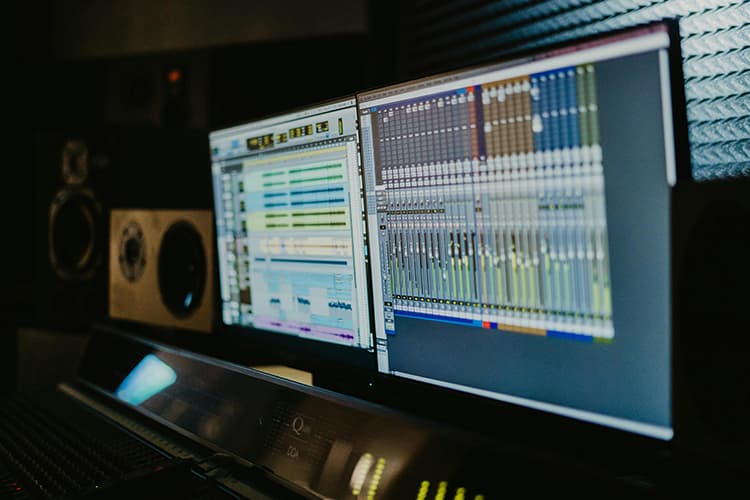
When I first started poking around different DAWs, I was like a kid in a candy store – everything looked awesome, but I had no idea what I actually needed.
After some trial and error (and a few rage quits), I’ve got a pretty good idea of what features are clutch for beginners.
So, let me break it down for ya.
User Interface
First up, you want a DAW with an intuitive user interface.
Trust me, there’s nothing worse than feeling like you need a PhD just to record a simple guitar riff.
Look for something with a clean layout and clearly labeled tools.
I remember spending hours trying to find the “record” button in one DAW – turns out it was hidden in some obscure submenu. Not cool, man.
Navigation
Navigation is key too. You want to be able to zip around your project without getting lost in a maze of windows and panels.
Some DAWs have customizable workspaces, which is pretty sweet once you figure out your workflow.
Documentation
Next up, built-in tutorials and learning resources are a godsend.
When I was starting out, I’d often find myself stuck on something simple at 2 AM with no one to ask for help.
That’s where good documentation and tutorials come in clutch.
Some DAWs even have interactive lessons built right in – it’s like having a music production teacher right there with you!
Compatibility
Compatibility with plugins and virtual instruments is another biggie. It’s like having a huge toy box to play with!
Pro Tip: don’t go crazy with plugins right off the bat.
I made that mistake and ended up with a computer that sounded like a jet engine every time I opened my DAW.
Start with the basics and build up as you learn.
Price
Now, let’s talk money. When you’re just starting out, you probably don’t want to drop a fortune on software you’re not even sure you’ll stick with.
Look for DAWs with affordable pricing options. Many offer tiered versions, so you can start with a basic package and upgrade as you grow.
Here’s a quick rundown of features to keep an eye out for:
- Easy-to-use recording and editing tools
- A decent selection of built-in virtual instruments
- Basic mixing and mastering capabilities
- MIDI editing functionality
- Automation features
- Support for third-party plugins
Shortcuts
One feature that’s often overlooked is the ability to customize keyboard shortcuts.
It might not seem important at first, but trust me, once you get into the flow of things, being able to zip around with hotkeys is a game-changer.
Community
Another thing to consider is the community around the DAW.
Having access to forums, user groups, and third-party tutorials can be super helpful when you’re learning the ropes.
I can’t count the number of times I’ve been saved by a random forum post at 3 AM.
Performance
Oh, and don’t forget about performance!
A beginner-friendly DAW should run smoothly on a decent computer without requiring a NASA supercomputer.
I learned this the hard way when my old laptop used to freeze up every time I added more than three tracks.
Updates
Lastly, look for a DAW with good update support.
The music production world is always evolving, and you want a DAW that keeps up with the times.
Plus, regular updates usually mean bug fixes and new features, which is always a bonus.
Remember, the goal is to find a DAW that gets out of your way and lets you focus on making music.
It’s easy to get caught up in the bells and whistles, but at the end of the day, the best DAW is the one that helps you turn the ideas in your head into actual tracks.
So don’t stress too much about finding the “perfect” DAW – just pick one that feels good and start creating!
Comparing Free DAW vs. Paid DAW for Beginners
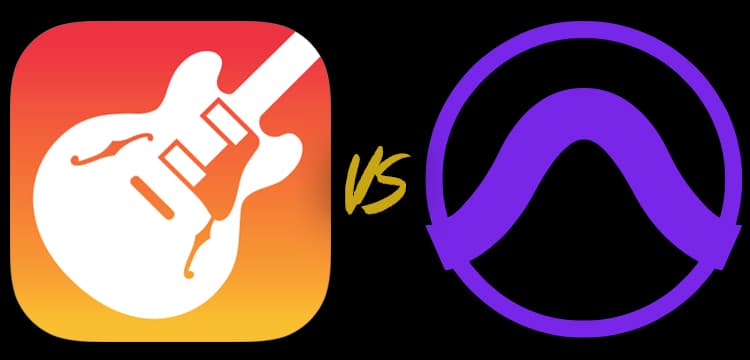
Alright, let’s talk about the elephant in the room – money.
When you’re just starting out, the idea of dropping a bunch of cash on software can be pretty daunting.
I remember when I was first getting into music production, I was scraping by on ramen noodles and couldn’t even think about splurging on a fancy DAW.
So, let’s break down the whole free vs. paid DAW situation.
Free DAWs
First off, let’s chat about the advantages of free DAWs. Obviously, the big one is that they’re, well, free!
You can jump right in without worrying about breaking the bank. Plus, a lot of free DAWs are pretty darn capable these days.
I’ve heard some killer tracks made on freebies that could easily pass for pro productions.
But here’s the thing – free DAWs often come with some limitations.
You might be restricted in the number of tracks you can use, or some of the more advanced features might be locked away.
It’s like having a Swiss Army knife with half the tools superglued shut.
Now, don’t get me wrong, free DAWs can be great for learning the ropes.
Heck, I spent my first year noodling around on a free DAW, and it taught me a ton.
But as you start to get more serious, you might find yourself bumping up against those limitations more and more.
Paid DAWs
That’s where paid DAWs come in.
Yeah, they cost money upfront, but they usually offer a lot more in terms of features and flexibility.
It’s like upgrading from a bicycle to a motorcycle – suddenly you can go a lot further a lot faster.
Here are some long-term benefits of investing in a paid DAW:
- More powerful features and tools
- Better sound quality and processing capabilities
- Regular updates and new features
- Professional-grade results
- Wider compatibility with plugins and hardware
But let’s be real – not everyone needs all the bells and whistles of a top-tier DAW right off the bat.
It’s like buying a Ferrari when you’re still learning to drive. Sometimes, a solid free DAW is all you need to get started.
Speaking of free DAWs, here are a few popular options for beginners:
- Cakewalk by BandLab (Windows only)
- LMMS (Linux MultiMedia Studio)
- Audacity (more of an audio editor, but still useful)
- GarageBand (Mac only)
- Tracktion Waveform Free
I actually started out on Audacity back in the day. It’s pretty basic, but man, did it teach me a lot about audio editing!
Of course, I quickly outgrew it once I started wanting to do more complex productions.
One cool thing about a lot of DAWs is that they offer upgrade paths from free to paid versions. It’s like a “try before you buy” deal.
You can start with the free version, get a feel for how it works, and then upgrade when you’re ready for more features.
For example, I started with the free version of FL Studio (back when it was still called Fruity Loops).
I used that for about a year as I was learning music production basics then I decided to take the plunge and buy the full version.
It was a smooth transition because I already knew the basics, but suddenly I had all these new toys to play with!
At the end of the day, whether you go free or paid depends on your goals and your budget.
If you’re just dipping your toes in the water, a free DAW might be all you need.
But if you’re serious about music production and you’ve got some cash to spare, investing in a paid DAW can really take your skills to the next level.
Just remember – no matter what DAW you choose, the most important thing is that you’re making music.
I’ve heard amazing tracks made on free DAWs and terrible ones made on expensive setups.
It’s not about the tools, it’s about how you use them. So pick what works for you, and start creating!
Tips for Getting Started with Your New Digital Audio Workstation
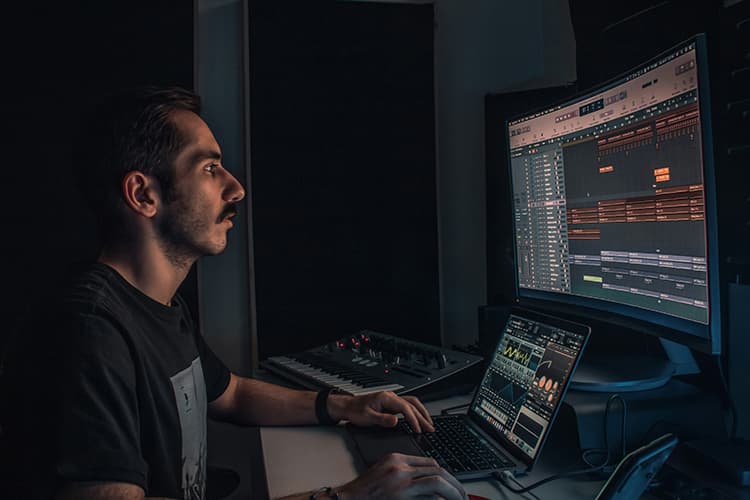
Alright, so you’ve picked out your DAW and you’re ready to dive in. Awesome!
But before you start laying down the next chart-topping hit, there are a few things you should know.
I’ve been down this road before, and let me tell you, I made every rookie mistake in the book.
So, let me share some tips to help you hit the ground running.
Studio Setup
First things first, let’s talk about setting up your home studio setup.
Now, don’t freak out – you don’t need a professional recording booth to get started.
When I first began, my “studio” was just a corner of my bedroom with my laptop and a pair of headphones.
Here’s a basic setup to get you going:
- A decent computer (doesn’t have to be top-of-the-line, but it should be able to handle your DAW)
- Good quality headphones or monitors
- An audio interface (this lets you plug instruments and mics into your computer)
- A recording microphone
- A MIDI keyboard (super helpful, but not absolutely necessary to start)
Learn Your DAW
Once you’ve got your setup sorted, it’s time to start exploring your DAW.
This can be pretty overwhelming at first – I remember opening up my first DAW and feeling like I was staring at the control panel of a spaceship.
But don’t worry, we’ll break it down.
Start with the basics. Learn how to create a new project, add tracks, and record audio.
Most DAWs have similar core functions, they just might be in different places.
Get comfortable with the layout and where to find the essential tools.
Here are some basic DAW functions to focus on at first:
- Recording audio and MIDI
- Editing tracks
- Using virtual instruments
- Adding effects
- Lean how to mix music
Don’t try to learn everything at once. I made that mistake and ended up frustrated and overwhelmed.
Take it step by step, and celebrate the small victories.
The first time I successfully recorded and edited a guitar track, I felt like a freakin’ rock star!
Digital Audio Workstation Resources
Now, let’s talk about resources for learning your chosen DAW.
Most DAWs come with built-in tutorials or help functions. USE THEM!
I ignored these for way too long and made life way harder for myself than it needed to be.
YouTube is also a goldmine for DAW tutorials. There are tons of channels dedicated to music production that offer great tips and tricks.
Just be sure to find tutorials specific to your DAW – what works in one might not work in another.
Forums and online communities can be super helpful too.
I can’t count the number of times I’ve been stuck on something at 2 AM and found the answer in a forum post.
Don’t be afraid to ask questions – most music production communities are pretty friendly and welcoming to newbies.
Mistakes to Avoid
Now, let me share some common mistakes to avoid when you’re starting out:
Don’t get caught up in plugins: It’s easy to fall into the trap of thinking you need every plugin under the sun. Trust me, you don’t. Learn to use the stock plugins first. They’re more powerful than you think!
Avoid the perfectionism paralysis: Don’t get stuck endlessly tweaking that one snare sound. It’s better to finish a bunch of “okay” tracks than to never complete anything. Remember, done is better than perfect.
Don’t ignore your ears: It’s tempting to rely solely on visual feedback, but trust your ears more than your eyes. If it sounds good, it is good – regardless of what the meter says.
Steer clear of the comparison game: Your first tracks won’t sound like the pros, and that’s totally okay! Everyone starts somewhere. Focus on your own progress, not how you stack up to others.
Don’t skip the manual: I know, I know – reading manuals is about as exciting as watching paint dry. But trust me, a quick skim can save you hours of head-scratching later on.
Avoid working in isolation: Music is meant to be shared! Don’t be shy about getting feedback from others. Join online communities, share your work, and learn from fellow beginners.
Don’t forget to save (and backup): Nothing’s worse than losing hours of work because you forgot to hit save. Get into the habit early, and thank yourself later.
Steer clear of analysis paralysis: With so many options, it’s easy to get overwhelmed. Don’t spend hours deciding between slightly different kick drums. Make a choice and move on – you can always change it later.
Conclusion
Congratulations! You’re now equipped with all the information you need to choose the best DAW for beginners in 2024.
Remember, the perfect DAW is out there waiting for you – it’s just a matter of finding the one that resonates with your creative style and goals.
Don’t be afraid to experiment with different options, and most importantly, have fun!
Your journey into music production starts here, so grab your headphones, fire up that DAW, and let your creativity soar.
Who knows? The next chart-topping hit might be just a few clicks away.
Happy producing!

